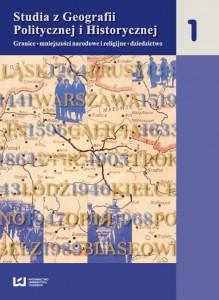Socio-religious activity, relics of the material heritage of protestants in Pabianice
DOI:
https://doi.org/10.18778/2300-0562.01.10Keywords:
Protestantism, religious minority, material heritageAbstract
The following paper addresses the history of the Protestant minority residing in the city of Pabianice. One of the most significant religious minorities in the region, Protestants settled in Pabianice as early as in 19th century, with the settlement being strongly influenced by the development of the textile industry. From the very beginning, their presence was marked by an active participation in the community life, participation which included both financial support and voluntary work for the common good.
The Protestant parish in Pabianice boasts a fine collection of priceless relics, including, to mention but a few, the parish church, cemetery and the Kindlers' burial chapel. Supervised by the regional art conservator, these sights form a major contribution to the city's rich history.
The Protestant community itself may be credited with setting up a number of cultural and educational projects, including art exhibitions and concerts. Despite the small size of the congregation, the parish remains active in terms of both religious and social life, providing ample opportunity for social interaction as well as religious instruction for the youngest of its members.
The peaceful coexistence of Protestants and Catholics, as well as many other minorities residing in Pabianice, resulted in numerous initiatives which brought benefit to all parties concerned. Some of these, however, ended abruptly during World War II. The postwar era was marked by suspicion and mistrust which chased many of the Protestants away. Out of several thousand believers before World War II, there are now only a few hundred left. Hindered by stereotypes, the cooperation between Protestants and Catholics is often restricted to ecumenical worship.
With the Protestant community declining, there needs to be closer cooperation between the parishes and the city council in order to preserve the common heritage.
References
Adamczyk A., 2007, Pabianice przewodnik po historii i współczesności miasta, Muzeum Miasta Pabianic, Pabianice.
Google Scholar
Anusik Z., 2009, Gustaw II Adolf, Ossolineum, Wrocław.
Google Scholar
Bruncz D., 2004, Parafia Ewangelicko-Augsburska św. Piotra i św. Pawła w Pabianicach, Portal Ekumienizm.pl: http://www.ekumenizm.pl/content/article/20040127173432274.htm (7.11. 2011).
Google Scholar
Ewangelicy w dziejach Warszawy, 2008, Warszawa.
Google Scholar
Gardawski J., Wołodko A. (red.), 2008, Ewangelicy w dziejach Warszawy – Materiały z sesji naukowej w Bibliotece Uniwersyteckiej w Warszawie, Warszawa.
Google Scholar
Jarzębowska E., 2009, Działalność kulturalno-oświatowa parafii ewangelicko-augsburskiej św. Piotra i św. Pawła w Pabianicach w latach 2002–2008, praca licencjacka w archiwum parafii ewangelicko-augsburskiej pw. św. Piotra i św. Pawła, Pabianice.
Google Scholar
Klimek A., 2012, Powojenna aktywność społeczno-religijna, relikty dziedzictwa materialnego ewangelików w Pabianicach, praca magisterska napisana w Katedrze Geografii Politycznej i Studiów Regionalnych UŁ, promotor: A. Rykała, Łódź.
Google Scholar
DOI: https://doi.org/10.18778/2300-0562.01.10
Parafia Ewangelicko-Augsburska w Pabianicach, 2012, http://www.pabianice.luteranie.pl/index.php (12.11.2012).
Google Scholar
Słownik języka polskiego, 2002, t. 1: A–K, Wydawnictwo Naukowe PWN, Warszawa.
Google Scholar
Szczepankiewicz-Battek J., 2005, Kościoły protestanckie i ich rola społeczno-kulturowa, Wydawnictwo Silesia s.c., Wrocław.
Google Scholar
Downloads
Published
How to Cite
Issue
Section
License

This work is licensed under a Creative Commons Attribution-NonCommercial-NoDerivatives 4.0 International License.








